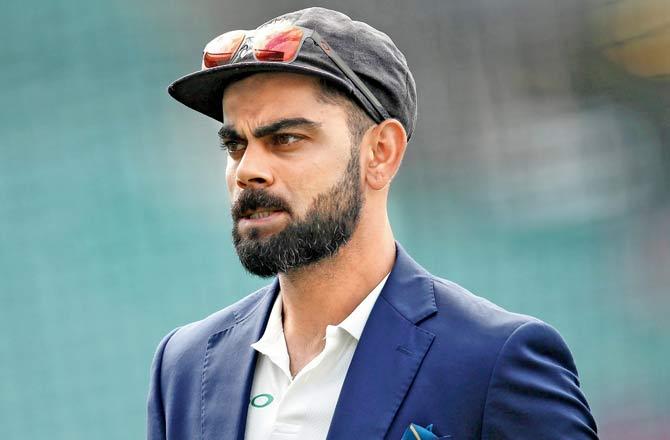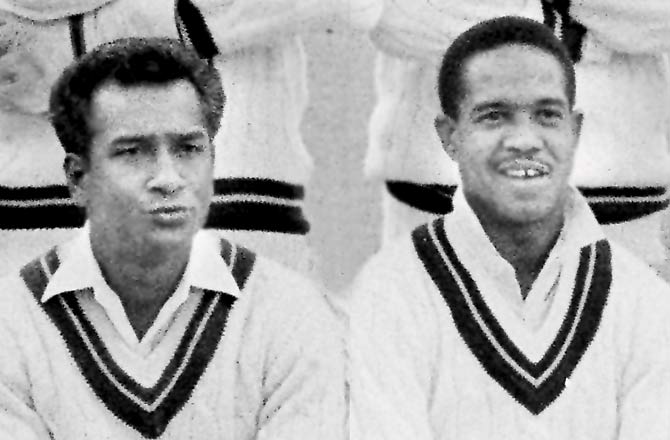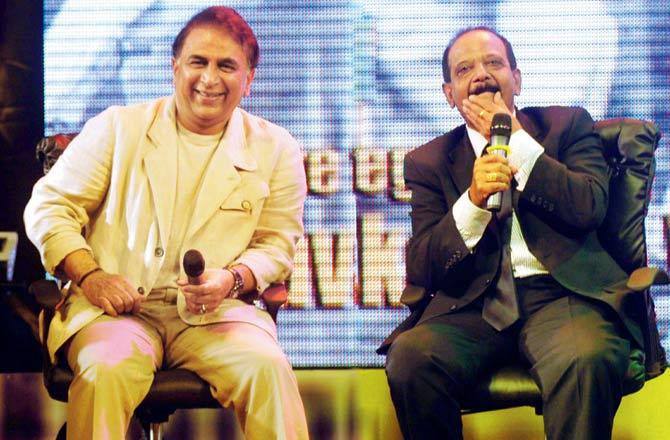The decision to send Rohit Sharma as an opener in Test cricket means that he bats ahead of Virat Kohli and this is crucial to revitalising the Mumbai batsman's career in the longer format

Rohit Sharma
 Many fans will nod knowingly and exclaim, "I've seen this script before — Rohit Sharma starts out with a bang in Test cricket." However, unlike a regurgitated version of an old movie, this script has a new twist; Rohit opened for the first time. On Test debut, Rohit scored a century against the West Indies and followed up with another one in the next match. On both occasions, he batted at six behind the likes of Sachin Tendulkar and Virat Kohli.
Many fans will nod knowingly and exclaim, "I've seen this script before — Rohit Sharma starts out with a bang in Test cricket." However, unlike a regurgitated version of an old movie, this script has a new twist; Rohit opened for the first time. On Test debut, Rohit scored a century against the West Indies and followed up with another one in the next match. On both occasions, he batted at six behind the likes of Sachin Tendulkar and Virat Kohli.
ADVERTISEMENT
When he recently debuted as a Test opener against South Africa he scored twin centuries against a strong attack headed by Kagiso Rabada and Vernon Philander. As an opener he preceded Kohli, which could be an important factor in whether this incarnation of Rohit is a success or a failure.
After his triumphant 2013 entrance into the Test arena, Rohit gradually faded to the point where it took him another 35 innings to reach three figures again. His moderate success in the intervening period meant he was in and out of the Indian side without ever cementing a spot in the batting line-up.
Big promotion
Most of those innings were played at either five or six but in what appears to be a last ditch effort to resurrect his five-day career, he was promoted to open in the first Test against South Africa.

Virat Kohli
This move makes a lot of sense. As a one-day opener Rohit has established himself as the next most dangerous batsman to his teammate Kohli. The move to opening means that Rohit bats ahead of Kohli in Test matches and this is crucial to revitalising his career in the longer format.
There appeared to be two things holding Rohit back at Test level; he was unsure what type of player he should be and at times he seemed overawed by Kohli's glowing presence.
This was not the fault of Rohit's skipper but a result of Kohli's enormous popularity among Indian fans. The raucous response to Kohli's appearance at the6 crease is enough to intimidate the best of players and Rohit's predicament is one I've witnessed before.
Whenever Viv Richards entered the arena I felt Australia's chances of removing West Indies opener Gordon Greenidge improved. Greenidge was a very fine batsman - he probably never realised how good - but such was Richards's aura that Gordon appeared to shrink in his presence.
Batting Rohit ahead of Kohli affords him the opportunity to establish himself before the skipper arrives at the crease. This in turn diminishes any adverse effect the crowd's infatuation with Kohli is likely to have on Rohit.
Thriving ground
The other advantage to Rohit opening is it paints a clear picture of how he should play. He obviously needs to be watchful at first but there's also plenty of opportunity to score quickly with the field up. If Rohit does get a start it then means he's more at ease when facing spinners with some runs under his belt.
This paid big dividends during his twin centuries as he clouted an inordinate number of sixes in that Test. This is in sharp contrast to some Test innings I've seen him play down the order where, early in his innings, he's committed hari-kari in trying to establish his authority over the spinners.
The Indian selectors deserve credit for this calculated gamble to resurrect Rohit's career. No doubt their main priority was to help India win Test matches but the longer form of the game needs every available exciting player.
Rohit is a very watchable batsman. When I first saw him play his horizontal bat shots in a 2008 ODI series against Australia, I thought; "Boy, this kid can really play." The fact that eleven years later he's still trying to establish himself as a Test batsman is perplexing. However, if this latest move works it will not only help India but also Test cricket because, even though he's no longer a kid, he still entertains the fans.
Two stars in one team!
Rohit Sharma's century in both innings against South Africa at Vizakhapatnam notwithstanding, he cannot be called a Test great as yet. But if he continues in the same vein at home and abroad, he could well achieve that status. We look at instances of world-beating sides having a minimum of two truly great players in their line-up.

Don Bradman and Bill Ponsford
Played in the Australian team from the late 1920s to 1934. They put on 451 for the 2nd wicket against England at The Oval in 1934. Ponsford bid international cricket goodbye after that match which Oz won by 562 runs.

Viv Richards and Gordon Greenidge
They both made their Test debut in the same Test – against India at Bangalore in 1974-75 and loved getting runs against England. In the 1976 series there, they plundered 829 and 592 runs respectively.

Garfield Sobers and Rohan Kanhai
Sobers was the greatest all-rounder of his time but Kanhai was not far behind with his batting prowess. Sobers played under the Guyanese's captaincy in his last series in 1973-74. Their 250-run stand against England at Georgetown in 1968 was memorable.

Sachin Tendulkar and Rahul Dravid
They gave nightmares to bowlers who faced up to India in the 1990s and 2000s. Their 16th century partnership witnessed v Australia in Perth, 2008 series put them on par with Greenidge & Haynes and Hayden & Ponting.

Sunil Gavaskar and Gundappa Viswanath
Several teams bore the brunt of this duo's brilliance in the 1970s and 1980s. West Indian fast bowling great Andy Roberts considered them among the very best he bowled to along with Greg Chappell and Barry Richards.
Catch up on all the latest T20 news and updates here. Also download the new mid-day Android and iOS apps to get latest updates
 Subscribe today by clicking the link and stay updated with the latest news!" Click here!
Subscribe today by clicking the link and stay updated with the latest news!" Click here!






